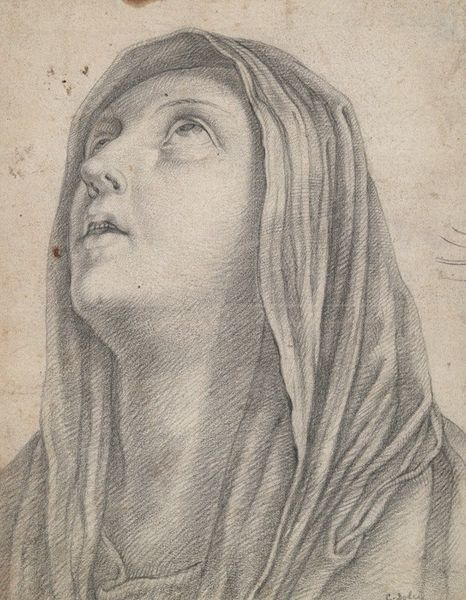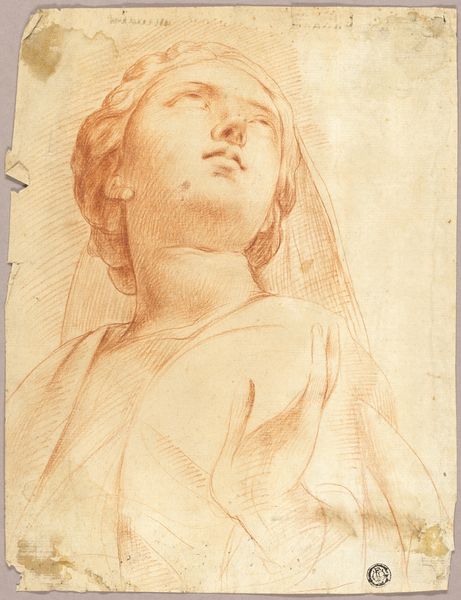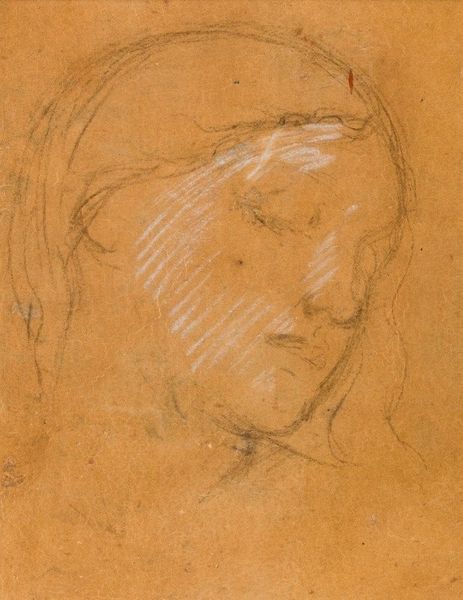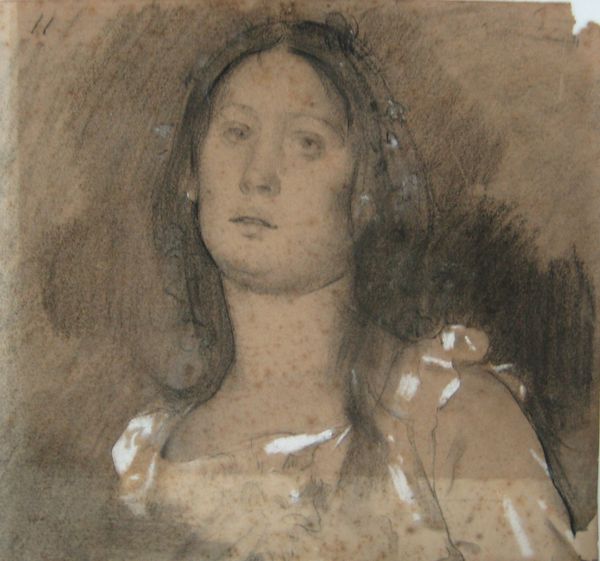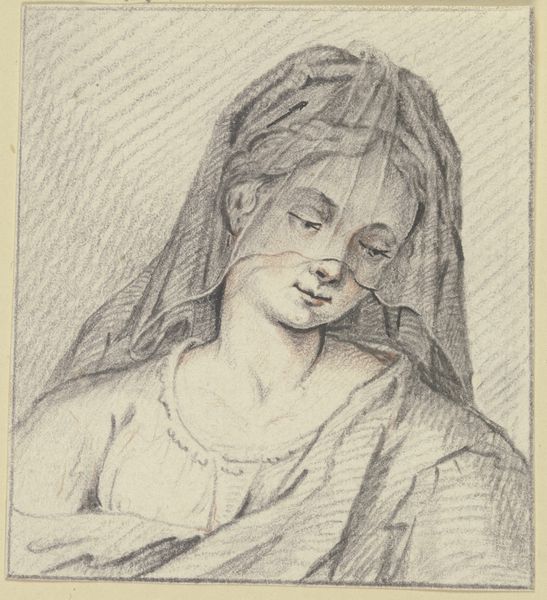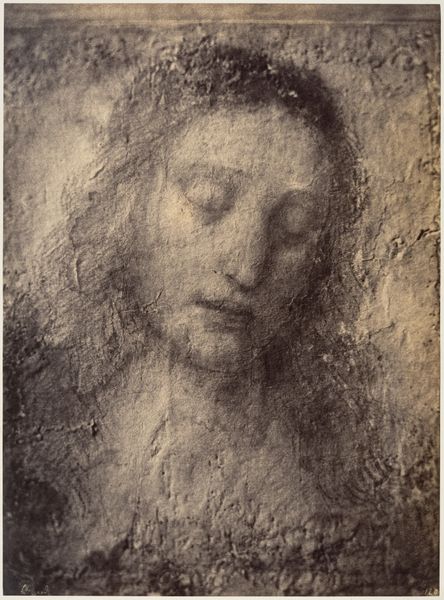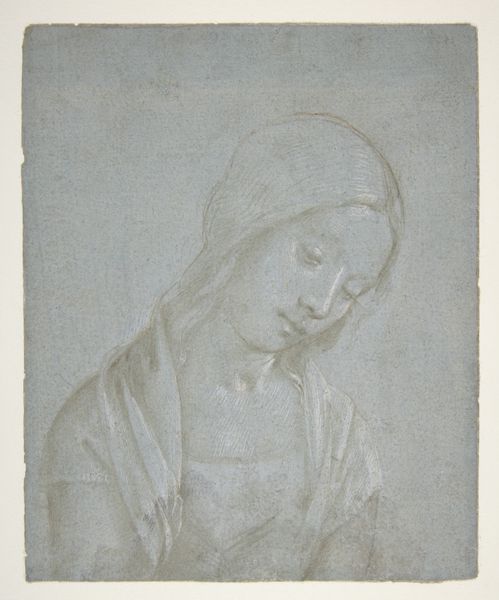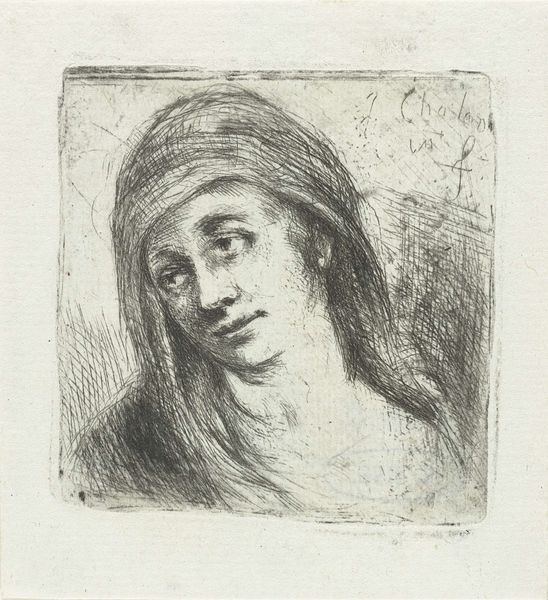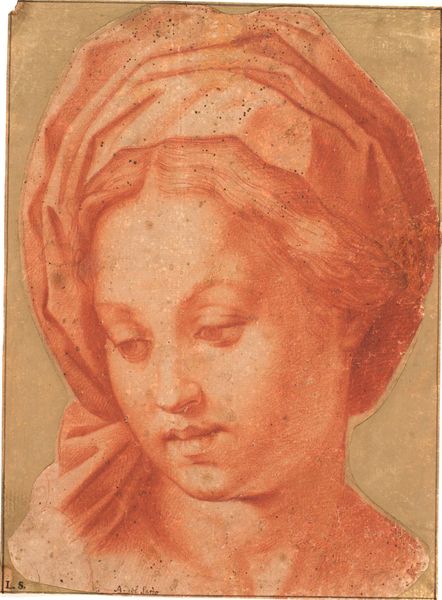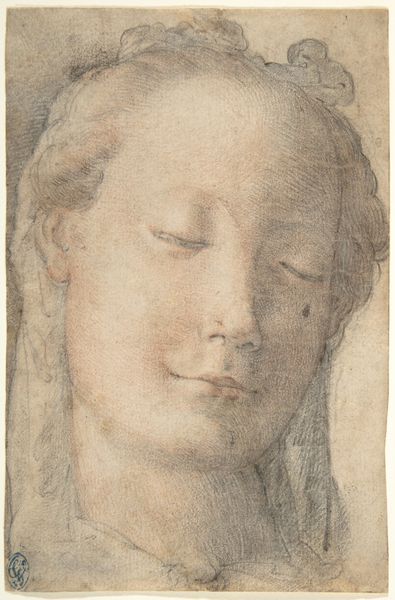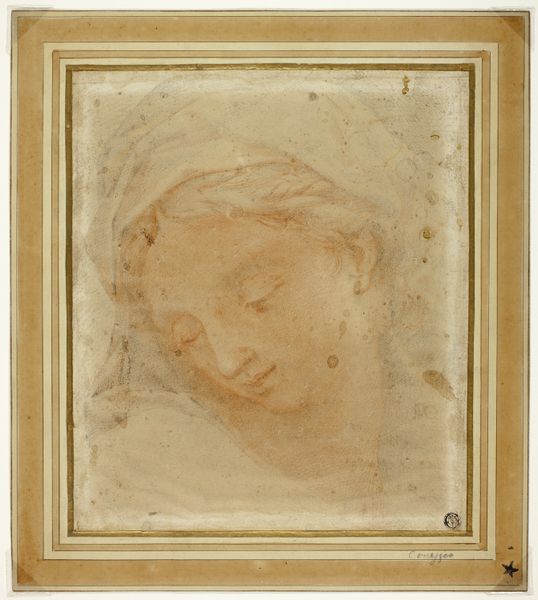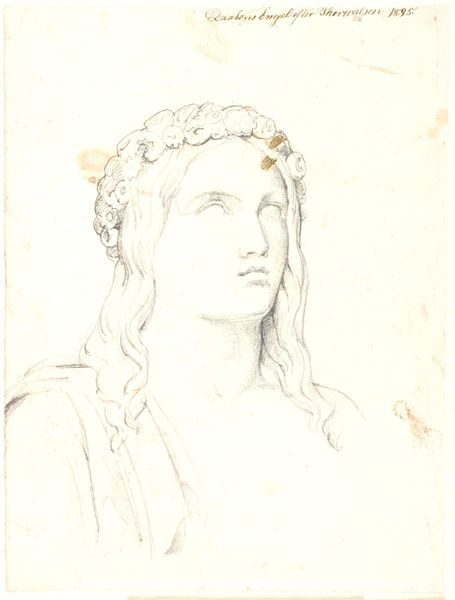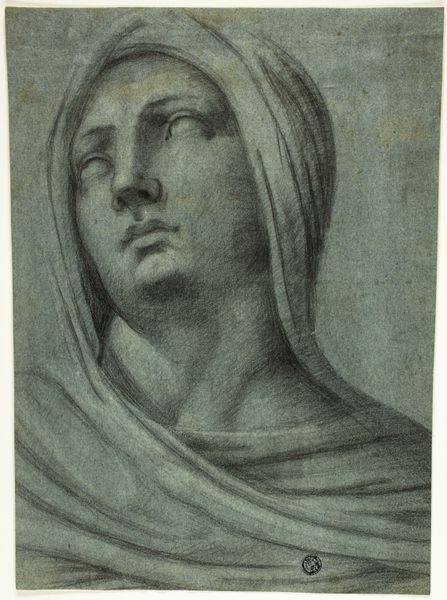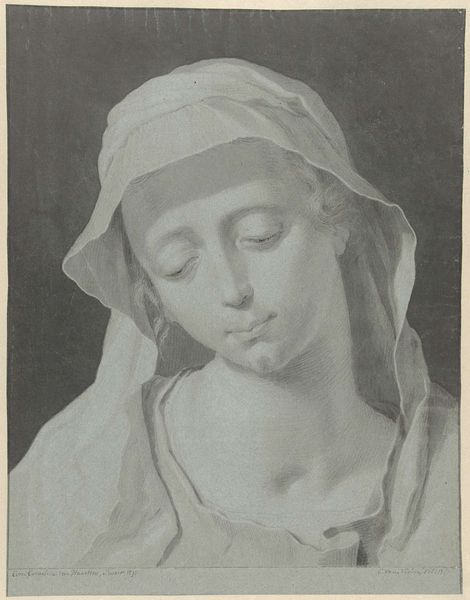
drawing, paper, pencil
#
portrait
#
drawing
#
charcoal drawing
#
figuration
#
paper
#
portrait reference
#
pencil
#
christianity
#
portrait drawing
#
history-painting
#
northern-renaissance
#
virgin-mary
Copyright: Public domain
Editor: We're looking at a drawing called "Head of Mary," attributed to Albrecht Durer. It appears to be executed in pencil and charcoal on paper. The expression is so serene, almost melancholic. What do you see in this piece from a formal perspective? Curator: I am immediately drawn to the stark contrasts created by the charcoal and pencil. Notice how Durer masterfully models the form through subtle gradations of tone, achieving a remarkable sense of volume and depth despite the limited palette. Consider the linear quality of the drapery versus the softer modeling of the face. Editor: It’s interesting that you point out the contrast between the drapery and the face. Do you think that has symbolic meaning? Curator: Perhaps, but let's examine it purely from a structural viewpoint. The crisp lines of the veil frame the delicate contours of her face, focusing the viewer's attention on her features. The directionality of lines is important: downward gaze suggests humility. Is there anything more to say about the orientation of the gaze within the space of the drawing? Editor: It seems to be looking inward, withdrawn…but without being aggressive, so to speak. This seems crucial to the serenity that I immediately noticed. Are you able to read meaning or narrative here? Curator: We can infer an emotive state, but formally speaking, it's the downturned eyes coupled with the balanced asymmetry of the face that creates this impression. One side of the face is more illuminated than the other, further adding to a contemplative mood. Also, the geometric foundation creates and maintains balance and symmetry. Editor: This was an entirely new way for me to appreciate it, to look beyond the story and focus on elements that bring forth an emotional response, but do not exactly scream narrative! Thank you! Curator: Indeed, by examining the structural components, we unlock layers of artistic intention independent of historical or theological narratives. My pleasure!
Comments
No comments
Be the first to comment and join the conversation on the ultimate creative platform.
